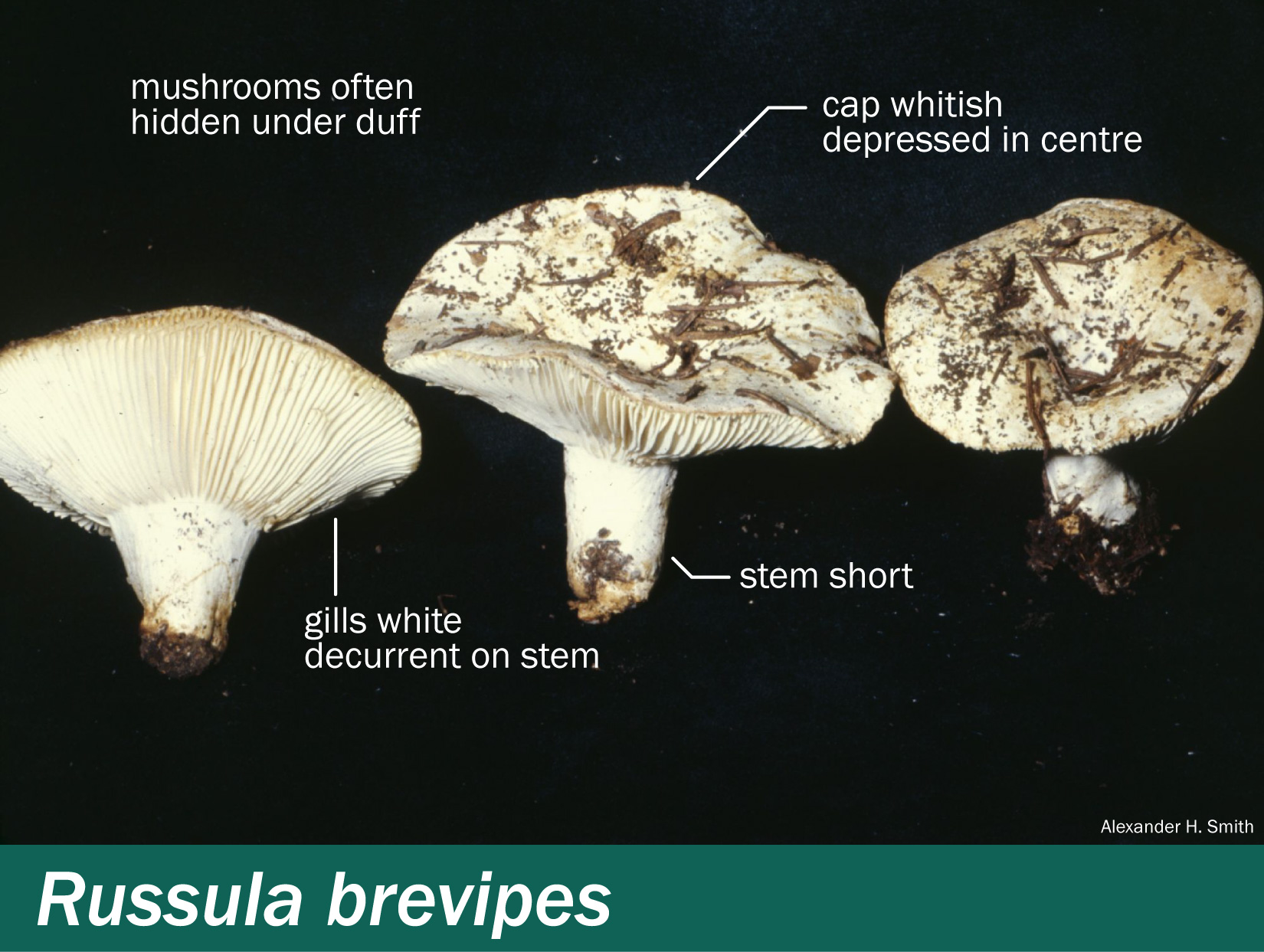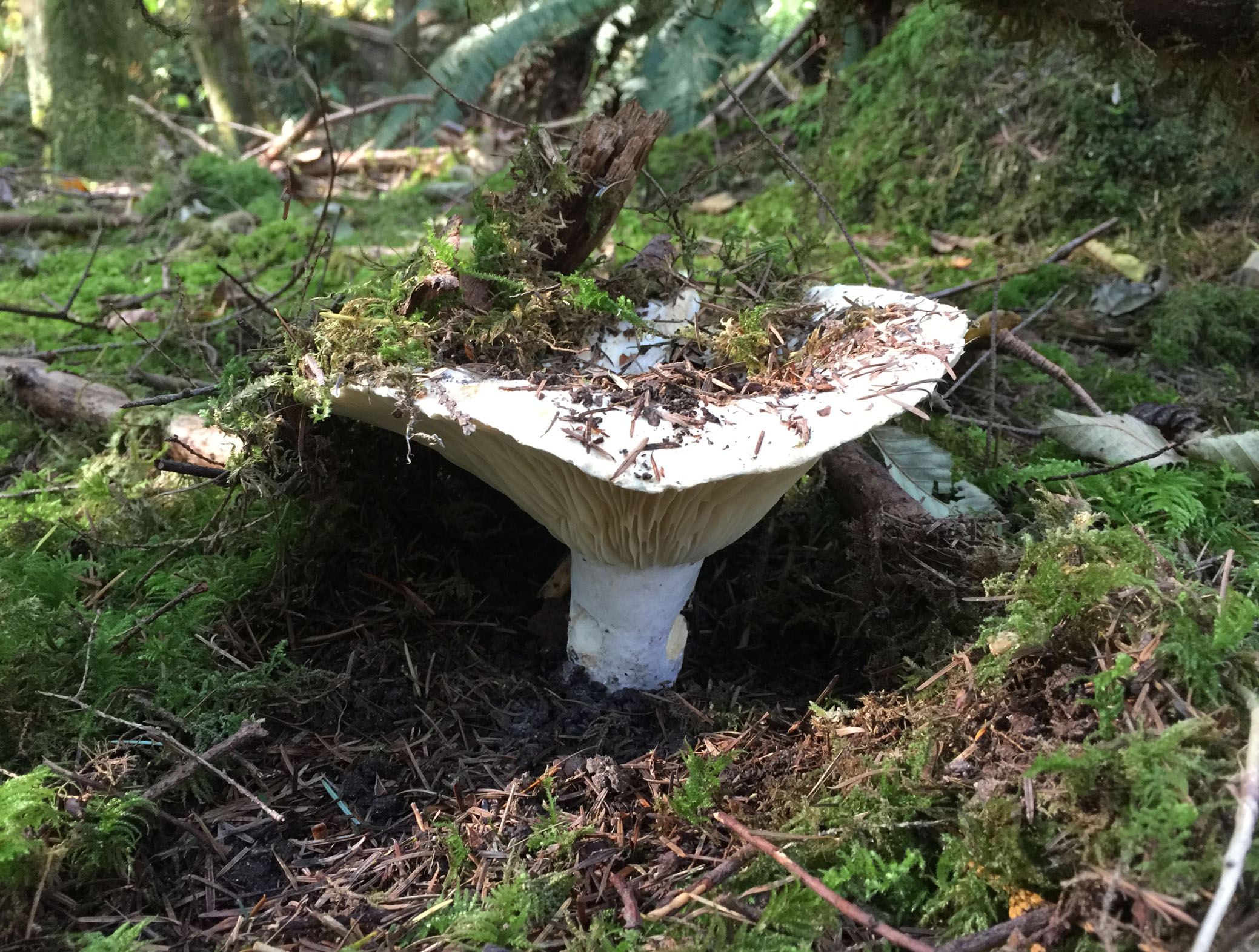Russula brevipes — Short-stalked russula
Odour: Mild.
Taste: Mild to acrid.
Cap: 7–30 cm in diameter. The cap starts out rounded with a central depression, and becomes more vase-like depressed with a wavy edge. The colour is white to cream, often with brown stains. In the forest, caps can be completely invisible, making only a bulge covered by duff and soil. Some of the cover of litter usually remains adhering to the cap.
Gills: Very crowded, with many short gills interspersed among the long gills, decurrent onto the stem, white.
Stem: 2-8 cm long x 2-5 cm wide, white.
Ring or veil: None.
Cup: None.
Spores: 8-10 x 6.5-9 µm, with scattered warts.
Habitat: In all kinds of forests, both with oaks (Quercus spp.) and with conifers including pines (Pinus spp.), and Douglas fir (Pseudotsuga menziesii), often only visible as a raised piece of forest floor; ectomycorrhizal4.
Geographical distribution: The species in a broad sense has worldwide distribution. Regionally, the short-stalked russula is known from Alaska, BC, and southwards to forested areas of Washington and Oregon1.
Avoid eating acrid/hot specimens, which may be cascade russulas rather than short-stalked russulas. Eating acrid/hot russulas has been associated with gastrointestinal upsets7.
Short-stalked russula can be parasitized by Hypomyces lactifluorum and the parasitized mushrooms are commercially harvested and sold as lobster mushrooms. They must be cooked; raw lobster mushrooms may cause stomach upsets. Short-stalked russulas have no known toxins but illnesses are occasionally reported by individuals with unusual sensitivities7.
Treatment: Contact your regional Poison Control Centre if you or someone you know is ill after eating russulas. Poison Centres provide free, expert medical advice 24 hours a day, seven days a week. If possible, save the mushrooms or some of the leftover food containing the mushrooms to help confirm identification.
Poison Control:
British Columbia: 604-682-5050 or 1-800-567-8911.
United States (WA, OR, ID): 1-800-222-1222.


